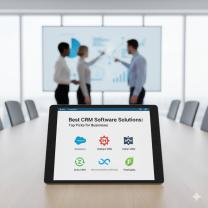What are the steps in project cycle management?
Project Cycle Management (PCM) is a structured approach used to plan, implement, monitor, and evaluate projects effectively. It typically involves a series of interconnected steps or phases that guide the entire project lifecycle. The specific steps in PCM may vary slightly depending on the organization or project, but here are the core steps commonly included:
Identification and Conceptualization:
- In this initial phase, the project idea or concept is identified and developed. This includes defining the project's objectives, scope, and expected outcomes. Stakeholders and potential beneficiaries are also identified.
Formulation and Design:
- Once the project concept is established, a detailed project plan is developed. This phase involves defining the project's goals, activities, budget, timeline, and resources required. A project proposal or plan is created, which outlines how the project will be executed.
Appraisal and Approval:
- The project proposal is reviewed and assessed for feasibility, sustainability, and alignment with organizational or funding agency goals. Approval and funding are sought from relevant authorities or donors. This phase often involves a detailed project evaluation.
Implementation:
- With project approval and funding secured, the project is executed according to the plan. This phase involves coordinating activities, managing resources, and ensuring that the project stays on schedule and within budget. Regular monitoring and reporting are crucial during implementation.
Monitoring and Evaluation:
- Throughout the project's lifespan, ongoing monitoring and evaluation take place to assess progress, identify issues, and make necessary adjustments. Key performance indicators (KPIs) are used to measure project success and track outcomes.
Review and Mid-term Evaluation:
- At various points during the project, reviews and evaluations are conducted to assess whether the project is achieving its goals and making any necessary changes. A mid-term evaluation typically occurs halfway through the project.
Completion and Closure:
- Once all project activities are completed, a final review and evaluation are conducted to assess the overall success and impact of the project. All project deliverables are finalized, and a project closure report is prepared.
Post-Implementation and Follow-up:
- Even after project closure, there may be a post-implementation phase where the project's long-term impact is monitored and assessed. This phase ensures that the project's benefits are sustained and that any lessons learned are applied to future projects.
Knowledge Sharing and Documentation:
- Throughout the entire project cycle, it's essential to document project activities, outcomes, and lessons learned. This documentation helps in knowledge sharing, transparency, and accountability.
Feedback and Adaptation:
- Continuous feedback from stakeholders, beneficiaries, and project staff is important to adapt to changing circumstances and improve project management processes. Adaptation may involve changes to project activities, strategies, or goals.
The Project Cycle Management approach emphasizes flexibility and adaptability, allowing projects to respond to unexpected challenges and opportunities. It also encourages stakeholder involvement and a focus on achieving sustainable development outcomes.
Project Cycle Management: A Comprehensive Overview
Project cycle management (PCM) is a systematic approach to planning, implementing, monitoring, and evaluating projects. It is used to ensure that projects are completed successfully, on time, and within budget.
PCM is typically divided into the following phases:
- Project identification and selection: This phase involves identifying potential projects and evaluating them to determine which ones are most feasible and beneficial.
- Project planning: This phase involves developing a detailed plan for the project, including the project's goals, objectives, scope, schedule, budget, and risk management plan.
- Project implementation: This phase involves carrying out the project plan and making necessary adjustments as needed.
- Project monitoring and evaluation: This phase involves tracking the project's progress and making necessary adjustments to ensure that the project is on track to meet its goals and objectives.
- Project closure: This phase involves completing all project activities and delivering the project's outputs to the stakeholders.
PCM is a valuable tool for managing projects of all sizes and complexity. It can help organizations to improve the efficiency and effectiveness of their project management processes.
Mastering Project Cycle Management: Key Phases and Steps
Here is a more detailed overview of the key phases and steps involved in project cycle management:
Project identification and selection
- Identify potential projects.
- Evaluate potential projects to determine which ones are most feasible and beneficial.
- Select the projects that will be implemented.
Project planning
- Define the project's goals and objectives.
- Develop a project scope statement.
- Create a project schedule.
- Estimate the project budget.
- Develop a risk management plan.
Project implementation
- Execute the project plan.
- Manage the project's resources.
- Communicate with stakeholders.
- Monitor and control the project's progress.
Project monitoring and evaluation
- Track the project's progress.
- Compare the project's progress to the project plan.
- Identify any deviations from the project plan.
- Make necessary adjustments to the project plan to ensure that the project is on track to meet its goals and objectives.
Project closure
- Complete all project activities.
- Deliver the project's outputs to the stakeholders.
- Evaluate the project's success.
- Document the project's lessons learned.
Project Management Essentials: Understanding the Project Cycle
PCM is an essential tool for project managers. It provides a framework for managing projects effectively and efficiently. By understanding the key phases and steps involved in PCM, project managers can improve their chances of success.
Here are some tips for successfully implementing PCM:
- Involve stakeholders throughout the project cycle. This will help to ensure that the project meets the needs of all stakeholders.
- Use a risk management plan to identify and mitigate potential risks.
- Monitor the project's progress closely and make necessary adjustments as needed.
- Communicate regularly with stakeholders to keep them informed of the project's progress.
- Document the project's lessons learned so that they can be applied to future projects.
PCM is a powerful tool that can help organizations to improve the success rate of their projects. By understanding and implementing PCM, project managers can increase their chances of completing projects on time, within budget, and to the satisfaction of all stakeholders.












